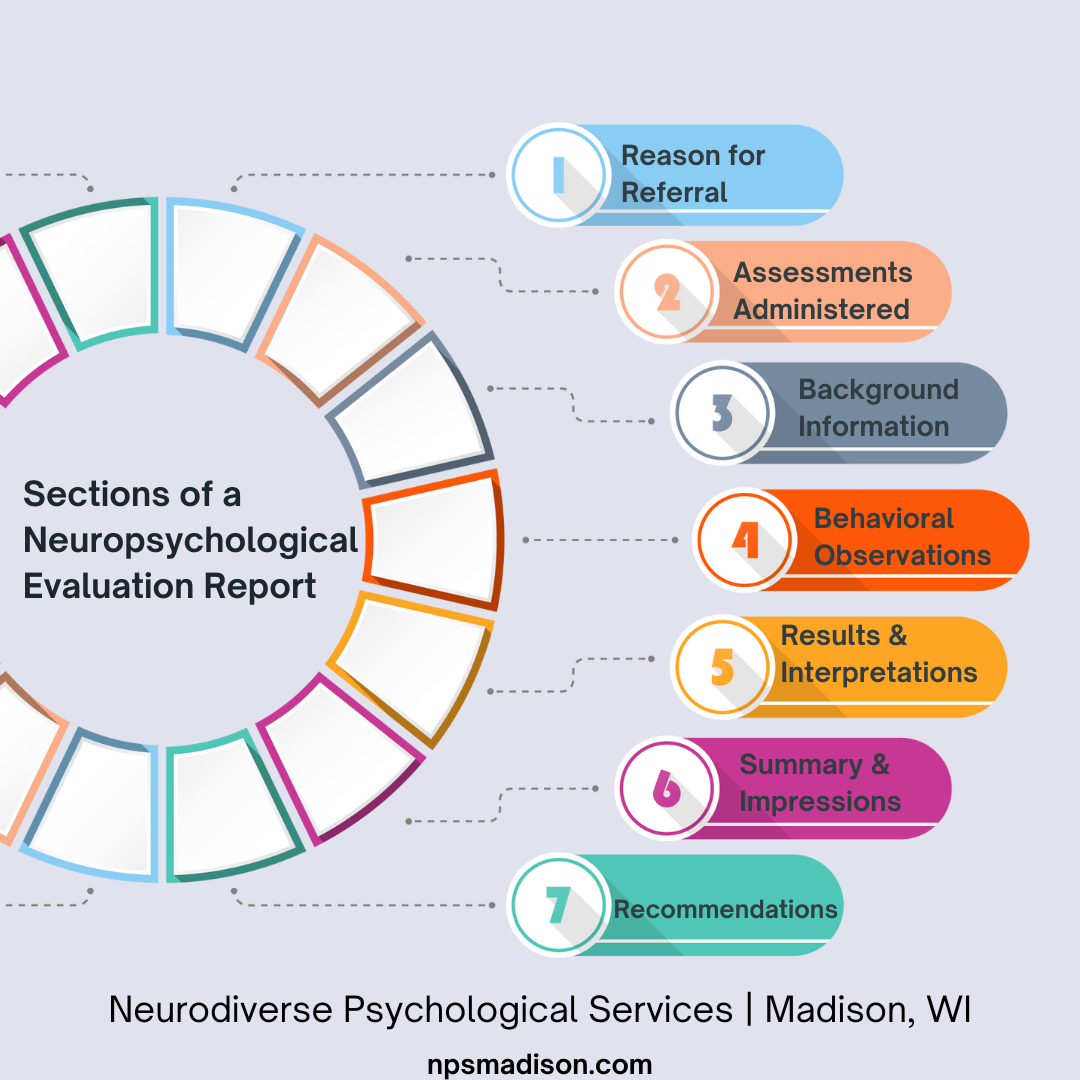How to Read a Neuropsychological Evaluation Report
At the conclusion of a neuropsychological evaluation, you can expect to receive a detailed written evaluation report. This report may be 10-15 pages or more in length, so there can be a lot of information to sort through. Typically, the report will be divided into sections, such as Reason for Referral, Assessments Administered/Sources of Information, Relevant Background Information, Behavioral Observations, Assessment Results & Interpretations, Summary & Impressions, and Recommendations.
Here’s a look at the information you can expect to find in each section:
Reason for Referral
This brief section will explain the main concerns or questions that led to the client seeking a neuropsychological evaluation.
Assessments Administered
This will be a list of all the sources of information used as part of the neuropsychological evaluation, including records reviewed, tests administered to the client, and rating scales or interviews completed by parents, teachers, etc.
Background Information
The purpose of this section is to provide a summary of relevant historical information, such as medical and developmental history, family and social information, and educational background. Often, it will describe in more detail the history of the concerns or referral questions discussed in the clinical interview. This section is not meant to be an exhaustive history but highlights the most relevant background information for the purposes of the neuropsychological evaluation.
Behavioral Observations
In this section, the psychologist will share their observations of the client during the testing session(s). It may include descriptions of the client’s speech, alertness, social interaction, activity level, attention toward tasks, effort, stamina, activity level, and affect. These observations are important, as the psychologist needs to make a determination regarding whether valid inferences can be made from the testing results or if other factors seemed to interfere with the client’s performance.
Assessment Results & Interpretations
This section is likely the lengthiest and will be divided into thematic areas based on the scope of testing included in the evaluation. Each subsection will focus on a different area of functioning assessed. For example, there may be subsections summarizing the findings related to cognitive functioning, academic skills, social-emotional functioning, etc.
There will likely be some test scores presented as numbers. These are often from norm-referenced tests, which means the client’s performance is compared to a large, national sample of same-age individuals. Standard scores, which are commonly reported among neuropsychological tests, have an average of 100.
The further away a person’s score is from 100, the greater the difference was between their performance on the test compared to most individuals their age. The majority of individuals (68%) obtain scores between 85 to 115. There are other types of norm-referenced scores that may appear in the results, and the psychologist can explain more about the different types of scores in the report during your feedback session.
This report section may include tables containing the scores from each assessment, or those tables may appear at the end of the report as an appendix. In addition to simply reporting the scores from the various assessments, this section will include the psychologist's interpretations of what those scores mean for the client’s functioning.
Summary & Impressions
The summary section serves as a conclusion tying together the results from different areas of testing and what, if any, diagnoses are appropriate for the client based on the evaluation results. If a diagnosis is made, the psychologist will often explain how the client meets the diagnostic criteria, which are the rules listed for each diagnosis in the Diagnostic and Statistical Manual of Mental Disorders, 5th Edition (DSM-5).
Recommendations
This is often the most important section of the report and the reason that many clients seek a neuropsychological evaluation. In this section, the psychologist will list any treatment recommendations or educational services that the client will benefit from based on the results of the evaluation. These recommendations should be tailored to the individual client and not just generic recommendations based on the diagnosis identified.
It’s very important that you understand the psychologist’s diagnostic impressions and recommendations, so make sure to ask whatever questions are needed so you leave the feedback session with a clear understanding of your next steps.
You’ll also want to hang on to the neuropsychological evaluation report, as you may need it in the future to provide evidence of a diagnosis and to access certain types of services.
Now that you know more about reading a neuropsychological evaluation report, you can be better prepared to get the information you need out of it. If you are looking for an evaluation focused on diagnostic questions related to autism, ADHD, and/or learning differences, contact me below.

